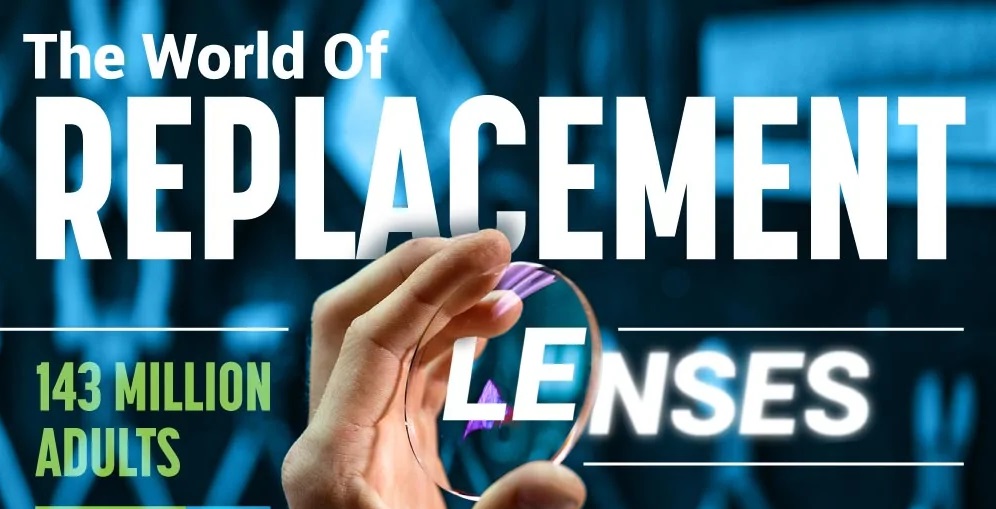The industry around eyeglass wear has been significant ever since its conception. This comes in the form of sunglasses, prescription glasses, and anything in between. Today 64% of U.S adults wear prescription eyewear, and that’s not even accounting for sunglasses. Eyewear only continues to become more and more common.
This means that, naturally, there’s a lot to be gained economically from investing and innovating within the eyeglass industry. Consumers spend, on average, $173 on a pair of glasses. For those with prescription lenses this is a consistent purchase that must be made every few years at the least.
One of the hardest aspects of getting a new pair of glasses comes in the frames. Finding a new pair of frames can be a cumbersome, frustrating, and expensive process for sunglasses and prescription glasses alike. This is where the idea of replacement lenses comes in.
Instead of finding the perfect set of frames with the perfect set of options, replacement lenses allow any frames to be turned into exactly what the consumer needs. This started as the simple concept of allowing anyone with an old pair of glasses to update them, but has now become so much more.
Replacement Lenses are Innovative
Using any pair of frames, sunglasses lenses, prescription lenses, tinted lenses, transition lenses, and any other innovation around lenses can be applied. This means an old pair of prescription frames can be sunglasses. It means an old pair of vintage frames can be made into modern prescription eyewear, and it can mean so much more.
Looking at some of the other options, lens coatings are an incredibly practical option for those with specific issues. Lens coatings can work to help with fogging, scratching, harsh light, or blue light. Similarly lens tints help with more specific issues.
A World of Lens Options
Purple lenses, for example, help with vision in foggy lighting and reduce glare off of reflective surfaces. Other benefits that come with various colors are less eye strain in bright lights, more contrast in low-light, more depth perception, less migraines, and all colors are generally thought to help with dyslexia over normal lenses.
Moving to look at sunglasses, several options also reveal themselves. Polarized lenses are the industry standard, and for good reason. They effectively block and reflect any harsh light or reflection, but this also means that they are far less effective indoors and with LED screens.
While of course many people opt to have both glasses and sunglasses, transition lenses bridge the gap. Transition lenses become dark when exposed to sunlight and lighten in all other contexts. This means that they’re only truly effective outside, and while they definitely need time to adjust, it allows an individual to buy just one pair of glasses for all purposes.
These are all great options but it’s also important to look at the physical industry around replacement lenses. As the concept has grown it’s become the fastest and cheapest way to get a new pair of prescription glasses. After sending in a pair of frames coming back as fast as five days for a pair of standard plastic prescription glasses.
Also, the obvious benefit of not having to purchase new frames is massive when it comes to price. This is especially true for anyone who tends to go for more high end and name-brand variety frames. You can now search anywhere for a pair of frames before turning them into exactly what they need.
In Conclusion
Replacement lenses, while still a relatively small market, are quickly becoming an innovative and cost effective choice for the consumer. Perhaps you have an old pair of frames you want to try again. Maybe you’d like to save money or expedite the process, this is the way forward.

Source: LensFactory

